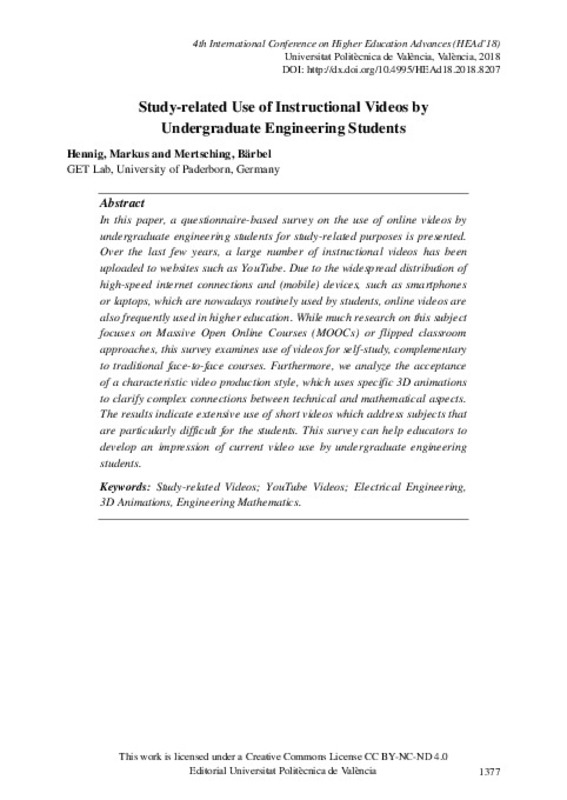JavaScript is disabled for your browser. Some features of this site may not work without it.
Buscar en RiuNet
Listar
Mi cuenta
Estadísticas
Ayuda RiuNet
Admin. UPV
Study-related Use of Instructional Videos by Undergraduate Engineering Students
Mostrar el registro completo del ítem
Hennig, M.; Mertsching, B. (2018). Study-related Use of Instructional Videos by Undergraduate Engineering Students. Editorial Universitat Politècnica de València. 1377-1385. https://doi.org/10.4995/HEAD18.2018.8207
Por favor, use este identificador para citar o enlazar este ítem: http://hdl.handle.net/10251/109720
Ficheros en el ítem
Metadatos del ítem
| Título: | Study-related Use of Instructional Videos by Undergraduate Engineering Students | |
| Autor: | Hennig, Markus Mertsching, Bärbel | |
| Fecha difusión: |
|
|
| Resumen: |
[EN] In this paper, a questionnaire-based survey on the use of online videos by undergraduate engineering students for study-related purposes is presented. Over the last few years, a large number of instructional videos ...[+]
|
|
| Palabras clave: |
|
|
| Derechos de uso: | Reconocimiento - No comercial - Sin obra derivada (by-nc-nd) | |
| ISBN: |
|
|
| Fuente: |
|
|
| DOI: |
|
|
| Editorial: |
|
|
| Versión del editor: | http://ocs.editorial.upv.es/index.php/HEAD/HEAD18/paper/view/8207 | |
| Título del congreso: |
|
|
| Lugar del congreso: |
|
|
| Fecha congreso: |
|
|
| Tipo: |
|
|
| URL: | http://ocs.editorial.upv.es/index.php/HEAD/HEAD18 |








